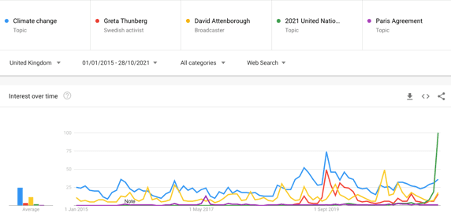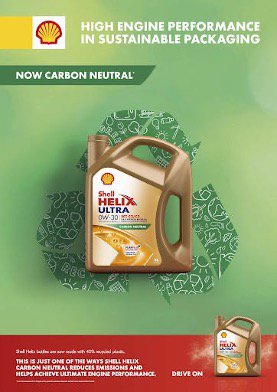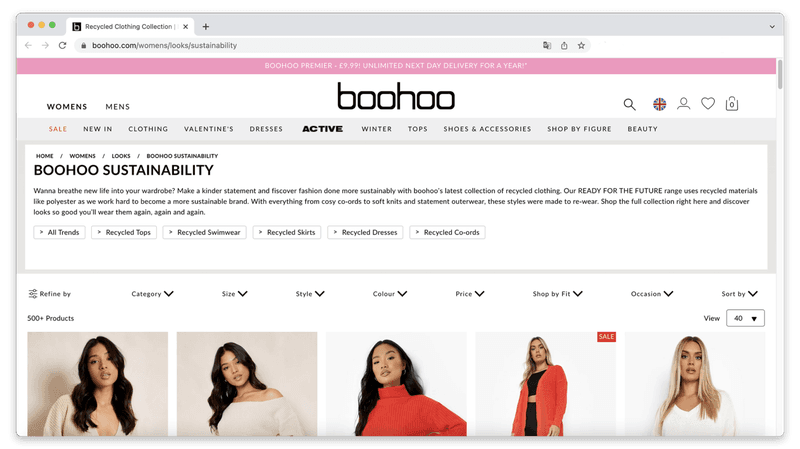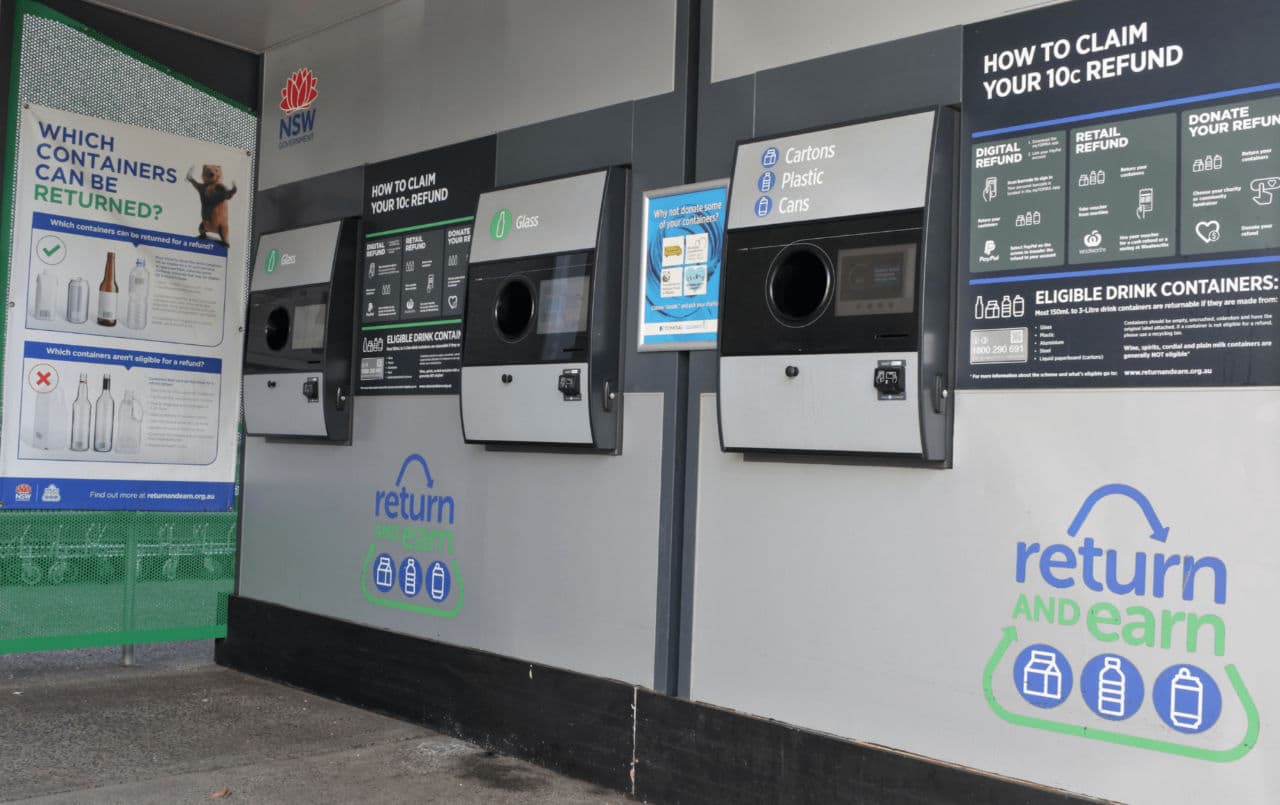(For marketers and decision makers who want to do the right thing)
What Is Greenwashing
Examples Of Greenwashing By Major Brands
How To Spot Greenwashing
Consequences Of Falling Into The Greenwashing Trap
How To Avoid Greenwashing In Your Marketing
5 Strategies To Tell A Sustainable Story
“Going green” sells. Companies are capitalising on the trend by touting as many eco-benefits as possible for their products — even if these claims are pushed beyond the realm of plausibility.
The issue is that as people demand change and look for sustainable products and solutions, the ‘green noise’ will start to drown out the genuine voices, which can confuse customers and detracts from genuine eco-friendly initiatives.
According to Google Trends, concern over climate change has typically been fuelled by cultural interventions from ambassadors such as Greta Thunberg and David Attenborough — or by disasters such as the Australian bushfires. Previously, the annual Conference of the Parties (COP) climate negotiations saw only a slight increase in interest, but that has all changed with this year’s crucial COP26 in Glasgow.

“Brands have struggled to find a voice with sustainability — perhaps because of the uncomfortable relationship between overconsumption and environmental damage. The risk of “greenwashing” is massive if brand rhetoric gets ahead of actual progress, with some 40% of current green claims made by brands online possibly misleading – which makes the task of creating sustainably led communications like walking a tightrope.” Think with Google
Many companies are now working to engage customers in their sustainability efforts, even as their core business model remains environmentally unsustainable. It’s classic misdirection intended to shift the customer’s focus from a company’s nefarious behaviours to something that’s peripheral.
Whether intentional or unintentional, greenwashing still spreads false information about what it takes to be sustainable and can convince well-meaning customers to make bad choices.
Even if a brand becomes popular, 82% of American buyers say they would stick with a trusted brand. However, if your advertising is misleading, they won’t stick around very long. Greenwashing can damage your brand’s reputation and diminish people’s trust in it. And it may not only affect a company’s profitability but, more importantly, can result in ethical harm.
We’ll look at how to execute green marketing correctly to avoid long-term damage to your brand’s reputation and to reach today’s eco-conscious consumers.
What is greenwashing
The definition of greenwashing is “to make people believe that your company is doing more to protect the environment than it really is”. Cambridge English Dictionary
In certain cases, some companies invest more of their time and money in marketing themselves as sustainable than in actual corporate environmental efforts. Sometimes, it’s completely oxymoronic, like the U.S. presidential campaign topic, “clean coal”.
Greenwashing is generally employed by organisations trying to reap the benefits of a green positioning without behaving accordingly. There are a number of methods used by organisations including:
Misleading consumers
This occurs when firms market their products as green instead of making them truly sustainable. An example would be a business claiming they ‘don’t use single-use plastic but replace it with a different form of plastic’, which is very different to addressing the eradication of plastic from their operations.
Being economical with the truth
Often companies use words such as ‘100% organic’, ‘carbon neutral’, ‘net zero’, ‘100% sustainably sourced materials’, ‘natural’ and ‘eco-friendly’ to present the product as being authentically sustainable. If only one element in the product is sustainably sourced or natural while the process of making the whole product is not, simply shining a light on a single positive while covering up other negatives is classic greenwashing.
Lack of factual evidence or certification
Genuinely green businesses are open and honest about their green credentials; they do it by certifying and proving whatever portions of their products or operations are green. They are also candid about the fact that they continue to have a negative influence on the environment in other ways; these companies will share both sides of the story, not just the positive side.
Examples of greenwashing by major brands
A surprising number of global brands are guilty of misleading people about their eco-credentials. Here are a just a few examples of major brands that have been called out for greenwashing and had their questionable ethics exposed:
McDonalds un-recyclable straws

You might remember the controversy back in 2019 when McDonald’s introduced paper straws that turned out to be non-recyclable. Aside from the questionable practice of cutting down trees to make disposable straws, this was a classic example of a corporate giant pretending to address an issue — in this case, plastic pollution — without actually doing anything
Adidas’ not so green Stan Smiths

Adidas was recently pulled up over a claim that a version of the Stan Smith sneaker was made from at least “50% recycled materials”. In actual fact, only the upper part of the shoe was made from 50% recycled material, rather than the complete shoe (upper + sole).
They didn’t endear themselves with the French Courts either by using an “End plastic waste“ logo.
In their ruling, the court stated “At the end of its life, a discarded will add to the mass of non-recycled plastic waste and, in all likelihood, fuel resulting pollution.” As such, the AEJ stated that “it cannot, therefore, be claimed that the marketing of these shoes would constitute a means of ‘putting an end to’ plastic waste.”
To avoid the negative publicity resulting from their greenwashing, Adidas should instead have stated the percentage of the whole product that was recycled, or made it clear that the 50% claim referred only to a specific component.
As for the ‘End Plastic Waste’ logo, it’s a prime example of a brand applying suggestive green imagery to oversell their claims while removing plastic from a waste stream where it could have been recycled multiple times.
Shell’s carbon neutral oil

Recently, Shell started promoting their Helix Ultra car oil in Singapore as ‘carbon neutral’. Along with many other global oil giants, their rationale for this being they claim to have bought sufficient carbon offsets to account for the carbon emissions of their hydrocarbons.
Boohoo’s not-so-sustainable fast fashion

Boohoo’s ‘Ready For The Future’ range attracted a great deal of attention in the UK. With their claims that Dressing more sustainably has never been easier!, their customers and the press swiftly pointed out that cheap acrylic workers mass produced by poorly paid workers clearly wouldn’t contribute towards lowering its impact on the planet and its inhabitants.
With a young and social media savvy demographic as their core customer base, the speed and reach of the negative publicity was a harsh lesson in trying to deceive eco-aware shoppers.
How to spot greenwashing
Greenwashing has evolved over the last 50 years and it’s becoming harder to spot to the untrained eye. Here are some of the signs to watch for when determining whether a brand is guilty of greenwashing.
Overinflated Phrases
Skewing perception of a product by overstating a benefit e.g. a shirt promoted as “now made with 50% more recycled fibres” when only increasing the amount from 2% to 3% of the total garment.
Suggestive Imagery
Using visually pleasing natured based imagery or incorporating small graphics that look like official logos for environmental certifications, but are actually meaningless.
Lack of Proof
Green claims made without sharing certifications or any evidence to back them up.
Vague terms or slogans
Buzzwords laden statements implying sustainability, including ‘new and improved, ‘non-toxic,’ and ‘made with biodegradable materials’ without qualification of the product’s true environmental impact.
Selective Disclosure
Emphasising favourable environmental data about goods while failing to mention the negative e.g. a car manufacturer extolling vehicle fuel economy while omitting the ecologically damaging mining techniques used to produce its lithium battery.
Symbolic Actions
Drawing attention to a minor positive action that is dwarfed in comparison to its overall environmental footprint.
Hidden Trade-Offs
Promoting a new change as environmentally friendly while neglecting its negative consequences e.g. Starbucks promoting straw-free lids to reduce plastic waste, yet the new lids used more plastic than the original.
Irrelevance
Making claims that are technically true but irrelevant to their environmental impact e.g.an aerosol spray advertised as “CFC-free” (CFCs have been banned for years).
Consequences of falling into the greenwashing trap
The stakes for sustainability efforts and expressing progress toward them in a transparent manner are shifting dramatically. The pace of sustainability change has increased significantly, as a result of rising customer awareness, changing attitudes in boardrooms, backed by the steady drumbeat of governmental regulatory announcements from the EU, US and China, as well as international collaboration to reduce carbon emissions.
Companies and executives are being compelled to reckon with their sustainability journeys in new and more serious ways, and find the right way to articulate their progress.
With the spotlight firmly focused on global sustainability, the consequences of corporate greenwashing are becoming more dire. The implications of marketing budgets being used in a non-transparent way to greenwash are increasingly risky in terms of public perception – and ultimately, loss of market share.
Customers and investors are now less inclined to accept disingenuous messaging around sustainability. The discovery of greenwashing can have detrimental effects on consumers’ attitudes and behavioural intentions.
For organisations wishing to use their green positioning as a reputational asset, studies have shown that only honest and transparent communication of environmentally friendly behaviour pays off. Customers are equally as likely to lose trust, whether they’re fed half-lies or outright lies about green activity.
It’s also worth noting that an organisations’ reputation will not benefit from their environmentally friendly behaviours when they are merely taking credit for complying with legal obligations. The message here being that only a truly green positioning can be beneficial.
How to avoid greenwashing as a sustainable brand
How do you stand out from the crowd? How do you remove yourself from the greenwashing crowd?
Follow the guidance
The Competition & Markets Authority issues guidance on how to stay on the right side of the law. It’s important to read and understand these to ensure your messaging is clear and doesn’t mislead consumers.
The basic principles are:
- Claims must be truthful and accurate
- Claims must be clear and unambiguous
- Claims must not omit or hide important relevant information
- Comparisons must be fair and meaningful
- Claims must consider the full life cycle of the product or service
- Claims must be substantiated
Read the full The Green Claims Code Checklist and The Green Claims Code in full.
Be genuine – make sustainability core to your business strategy
The key is to own the narrative on sustainability and be open and transparent about your actions as well as challenges that you haven’t yet overcome.
- Develop a sustainability strategy anchored in purpose
- Monitor & report
- Engage your customers & encourage their feedback and views
- Build capabilities internally and through external partners
Stick to the facts – if you make claims, back them up
Take a more academic approach to sharing information – if you state facts, then cite the research or reports to show how they came about. Share your workings!
Be fully transparent about your commitments
Create a roadmap and own it – be open about the milestones, progress and the challenges involved in making change happen. It’s not possible to solve all the complex issues from the outset, so be clear about what you have managed to do, what the barriers are and the plans in place to overcome them.
Be consistent – don’t just make it a passing trend
Running a one-off or time limited green initiative and then making this an ongoing marketing message is the wrong path to take and will not achieve anything. Continual improvement which requires multiple initiatives towards a clear goal is the way forward.
Make sustainability a business-wide initiative
Some brands, like clothing retailer H&M, have created “sustainable” lines, while the rest of their products and business practices are not eco-friendly. If you’re going to release green products, show you’re committed by making sustainability a company-wide initiative.
Avoid misleading creative choices
Use of visuals that may be construed as sustainable, such as the colour green and other natural imagery, should be avoided. Using packaging and designs that allude to eco-friendly business practices is misleading and indicates that sustainability is only a fad rather than a movement.
Consider the full lifecycle of products
Don’t focus on a single ‘eco-friendly’ element (i.e. a cosmetic promoted as “microbead free” is a misleading benefit given that microbeads are banned in the UK). Omission of negative information is specified as potentially misleading. In other words, you better be very clear on what’s going on in your supply chain.
5 strategies to tell a sustainable story
Some of these may at first appear counterintuitive to many, but they are borne out of proven strategies and behavioural insights. This is all about doing things differently and shaking up the status quo, so requires clarity of purpose and a test and learn mentality.
Make the customer the hero
Although many more people may be selecting more environmentally friendly products, people still want to know ‘what’s in it for me’. It’s human nature. Virtue signalling still drives much of what we do, whether consciously or not. Enabling this to happen will only help strengthen and share your message wider and faster i.e. reward people for taking pictures or videos of them using the product on social media.
Champion positive futures
Central to this is to swerve the negatives. Your audience won’t appreciate a reminder of the huge challenges the world faces, or the compromises they might have to make to live a more sustainable lifestyle. Focus on the positives – the great big, exciting things that are happening that will put a smile on their faces.
Encourage quality and longevity over fast & cheap
Truly embracing change requires facing up to the tension between being a growing business and a commitment to reducing consumption. Many large brands are now offering repair or recycling services and pushing the message of not making a new purchase unless it’s really needed. Growth does not necessarily equal ‘more stuff’, so shift the focus onto quality as the value proposition and re-engage consumers with stuff in a new way.
Involve your audience, suppliers & staff
Encourage people to share their stories. Patagonia does this well on their blog which includes interviews with consumers around their stuff, highlighting their relationship to it and encouraging the audience to engage with their stuff so they keep it longer and use it more.
Don’t talk about green or eco-friendly
This sounds counterintuitive, but instead of approaching the issue head-on, think about people’s passion and pain points. Don’t talk about energy efficiency – talk money savings. Instead of talking about embodied carbon, talk about healthy and productive buildings. Don’t talk about reuse and recycling and try talking about innovative new products.
Final thoughts
Don’t make out you have everything sussed – no one does! Take people with you on your journey and highlight the obstacles you’ve identified and need to overcome. Showing progress and learning while calling out areas that are out of your control and require larger systemic changes may open up new partnerships and opportunities.
We know that people are increasingly prioritising environmentally responsible businesses while shunning firms that fail to satisfy their expectations. Make sure you’re not one of them.
Maintaining transparency about your actions and incorporating sustainability into your brand’s basic beliefs can help you remain ahead of the competition. The reward will be your audience’s long-term loyalty.
Instead of hitting the messaging head-on, communicate stories that will promote feelings in people, such as positive stories, actions you’re taking to make positive changes.
Business leaders are going to be responsible for driving social change, as well as economic change. How do you change individual people’s lives? Start a movement. Start small. Start with your community, whoever they are.





